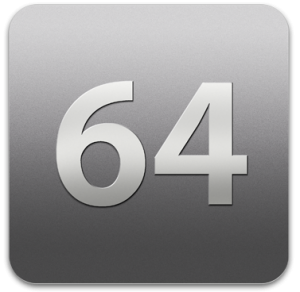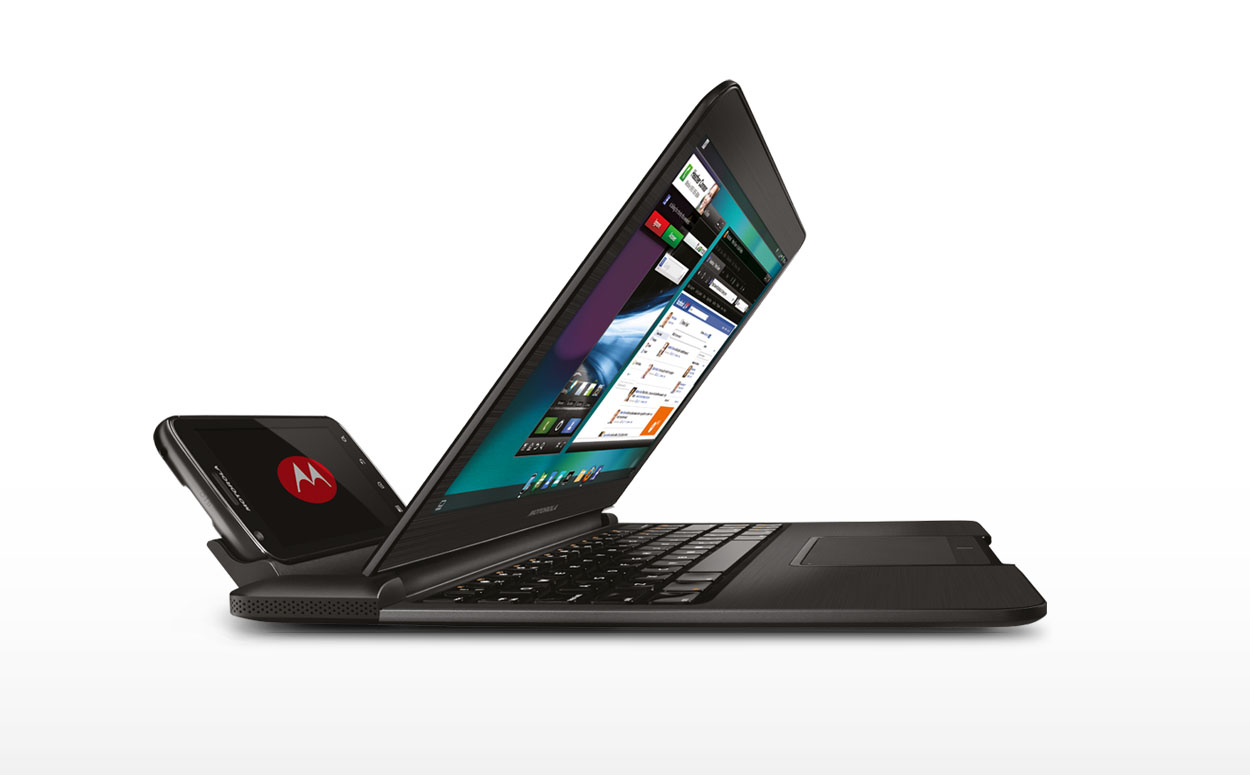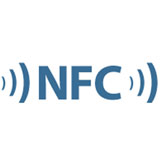So now I am no longer affiliated with a mobile platform provider, I can again afford to have a wider look at the world out there (publicly, that is), and how timely, huh? With Microsoft buying some of the remains of the once mighty Nokia and the iPhone 5S announcement, we have a bit to play with, I suppose.
Apple then? Are you underwhelmed? Hey, you can have it in blingy gold now, you know? Do you love the new design of iOS 7 (and, yes, we all know they “sought inspiration” from Windows, etc.)? Or do you turn away in disgust that the guys from Cupertino managed again to sprinkle pixie dust in their fanboys’ and girls’ eyes?
64 Bit and ARMv8
 I tell you what, the (r)evolution sits elsewhere: I would posit that the switch to a 64 bit architecture plus iBeacon (see below) will have the biggest impact. Here’s why: the chip architecture (not only the 64 bit bit but also the ARMv8 stuff) offer some performance boosts today but, more importantly, set the stage for tomorrow: you can do a lot more with this (from RAM going over 4GB, to using Trustzone, ARM’s response to BlackBerry Balance – offering two virtual processors and hence “spaces” on one phone, so you can play Angry Birds on one side without your IT folks getting grey hair over compromising precious enterprise data on the other). But it also sets the stage for using your phone as the center point of your computing life: it is powerful enough to do all this (heck, it has more power than my wife’s MacBook from 5 years ago – other than RAM, for now, that is). In effect, you will be carrying the power of a proper desktop computer. More on why this matters later.
I tell you what, the (r)evolution sits elsewhere: I would posit that the switch to a 64 bit architecture plus iBeacon (see below) will have the biggest impact. Here’s why: the chip architecture (not only the 64 bit bit but also the ARMv8 stuff) offer some performance boosts today but, more importantly, set the stage for tomorrow: you can do a lot more with this (from RAM going over 4GB, to using Trustzone, ARM’s response to BlackBerry Balance – offering two virtual processors and hence “spaces” on one phone, so you can play Angry Birds on one side without your IT folks getting grey hair over compromising precious enterprise data on the other). But it also sets the stage for using your phone as the center point of your computing life: it is powerful enough to do all this (heck, it has more power than my wife’s MacBook from 5 years ago – other than RAM, for now, that is). In effect, you will be carrying the power of a proper desktop computer. More on why this matters later.
BLE and iBeacon (and NFC?)
 Add iBeacon then. Another fancy Apple marketing term, right? Well, yes, because it is basically part of package that uses Bluetooth Low Energy (or “BLE”; it’s official branding is “Bluetooth Smart” now; see here for an overview), which was deployed first by – gasp – Nokia in 2006 (!) and is also present in the BlackBerry Z10, Q10 or the stunning Z30 – all of which also sport NFC on top). The HTC One has it, too, and a few more. So what’s the big deal? Well, BLE was always a big deal: the low-energy bit means you can run peripherals that can interact with your phone that will run for years on a single small battery. The range is better, too. And all of a sudden, you are looking at something which I have been hallucinating about for the past ten years: your phone as the center of your computing needs: you walk out of the door (yes, you can lock that door with your phone, too) and you have everything with you: files, photos, music, the whole thing. You walk into your office, your phone will pick up the BLE signal from peripherals such as keyboards, monitors, a mouse (or touchpad), connects with them and you have your office computer running. You come home (yes, again unlocking your fancy door), and it will connect with the same set up (or your TV if you don’t want an additional screen scarring your interior design approach) and you have all your stuff on there, too. Your central processing unit was in your pocket all the time…
Add iBeacon then. Another fancy Apple marketing term, right? Well, yes, because it is basically part of package that uses Bluetooth Low Energy (or “BLE”; it’s official branding is “Bluetooth Smart” now; see here for an overview), which was deployed first by – gasp – Nokia in 2006 (!) and is also present in the BlackBerry Z10, Q10 or the stunning Z30 – all of which also sport NFC on top). The HTC One has it, too, and a few more. So what’s the big deal? Well, BLE was always a big deal: the low-energy bit means you can run peripherals that can interact with your phone that will run for years on a single small battery. The range is better, too. And all of a sudden, you are looking at something which I have been hallucinating about for the past ten years: your phone as the center of your computing needs: you walk out of the door (yes, you can lock that door with your phone, too) and you have everything with you: files, photos, music, the whole thing. You walk into your office, your phone will pick up the BLE signal from peripherals such as keyboards, monitors, a mouse (or touchpad), connects with them and you have your office computer running. You come home (yes, again unlocking your fancy door), and it will connect with the same set up (or your TV if you don’t want an additional screen scarring your interior design approach) and you have all your stuff on there, too. Your central processing unit was in your pocket all the time…
It will be interesting to see if this will kill NFC. Google has supported NFC and only recently announced BLE support for Android 4.3. Some manufacturers (BlackBerry, Samsung, HTC) support both. But BLE’s advantage is two-fold: low energy and proximity. You see, NFC only works in close range (hence the name, I guess: “near-field” communication). This can make it a bit awkward: you have to be close (any London travelers will know that: you have to get that bloody Oyster Card out of the depth of your bag/pocket/wallet to make it work; imagine you could just walk through continuing to hold your Latte and free Metro paper, taking it all in your stride). In other words: BLE is a lot more Appelesque than NFC. It doesn’t only provide the functionality (connecting device A with peripheral B) but it also does it in the most unobtrusive and somewhat stylish way.
1 + 1 = 3+
So let’s put the two together then: you have a desktop computer in your pocket and have an invisible cable connecting you to the things you need to actually also use it as a desktop computer (or laptop). What more would you need, right? Yes, exactly, nothing.
 Now, mind you, Apple wasn’t first with this (whatever their marketing folks pre- or post-Steve may want you to believe). There has been the Motorola Atrix, which was the dernier crie at CES a couple of years ago: a phone with a laptop dock and off you were with a full computer. Well, you had a keyboard, laptop screen and access to a browser. Alas, it didn’t have the power of a normal PC, so wouldn’t do the full trick (read the reviews on Amazon’s product page to get an idea). For an up-to-date version, have a look at the Motorola Atrix 4G.
Now, mind you, Apple wasn’t first with this (whatever their marketing folks pre- or post-Steve may want you to believe). There has been the Motorola Atrix, which was the dernier crie at CES a couple of years ago: a phone with a laptop dock and off you were with a full computer. Well, you had a keyboard, laptop screen and access to a browser. Alas, it didn’t have the power of a normal PC, so wouldn’t do the full trick (read the reviews on Amazon’s product page to get an idea). For an up-to-date version, have a look at the Motorola Atrix 4G.
The thing is this: as most reviewers will tell you, Motorola did not give you the comfort of a computer, only a more comfortable and more feature-rich way to run stuff.
Apple wouldn’t do that (not even in the post-Jobs era, I would think). And this is why the 64 bit architecture matters: because that *could* deliver just that (even if it might not do so yet, which is though not down to the hardware but the lack of application software). Fast forward not very much and that might be done. And then you would have what the Atrix wanted to be (and, believe me, I was very impressed when I saw it in Las Vegas on that cold January day in 2011).
There’s More…
Let us now have a very brief glimpse at the one feature Apple gave a lot more attention to during its 5S keynote, namely that fingerprint reader. In itself, it is more of a geeky delight: don’t we all love it (well, unless you hate Apple)? But do we have anything functional to do for it other than all of us now duly locking our phones (though iOS7 now forces you to do that anyway) as we should? Well, not that much.
Alas, bring back the memories of that computer in your pocket connecting to those peripherals and then add authentication by finger-tip. Now that’s looking better, doesn’t it? All of a sudden, that makes sense, huh? You can log into your company’s enterprise e-mail – by fingerprint, you can make those PayPal payments – by fingerprint, you can log into your Facebook account – by fingerprint (no more posting nasty or just not so very funny status updates in other people’s Facebook accounts), etc. It closes the circle of mobile-centric computing.
Fear Not: Not Only Apple
Of course this is not Apple country. As I pointed out above, many manufacturers had these things before. Apple however – and that deserves a hat tip even from the trenches of the haters – has (yet again) shown its capability of packaging things in a way that make them comprehensible to people who do not fancy setting up for hours on end, who want stuff to just work. Unlike the Atrix it is not only “almost” working, it does work. Unlike Oyster, you don’t have to touch, you just need to be there. If only my old folks at BlackBerry had that marketing department…
But we will see similar solutions from many folks. They’re not daft, you see (phew!). From Apple’s perspective, it might have managed to escape the Innovator’s Dilemma once more. This, alas, is no guarantee for the future… For now though, I reckon we might be seeing glimpes of the next generation of mobile computing and, boy, am I excited! 🙂

 I did a little talk reminiscing on what was hot at this year’s Mobile World Congress, the mobile extravaganza in Barcelona. One of the show’s highlights was BlackBerry’s hyper-connected Porsche (See
I did a little talk reminiscing on what was hot at this year’s Mobile World Congress, the mobile extravaganza in Barcelona. One of the show’s highlights was BlackBerry’s hyper-connected Porsche (See  Bluetooth 4.0 (
Bluetooth 4.0 (






